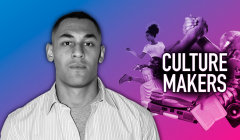
‘Subculture is the most powerful tool we have’
Louis Persent, Co-Founder and Creative Director at Weirdo on the power of embracing the niche

Agency leaders ask if brands should be doing a better job in representing and reflecting older women in advertising.

“As soon as I turned 50, advertisers suddenly stopped telling me I should buy Chanel and started telling me I smelled of wee.” Earlier this year at Creative Equals’ Rise conference Havas’ Vicki Maguire aptly put into words the shared experience that older women face when it comes to representation in advertising.
If not absent from communications completely, older women are used to reinforce lazy, damaging stereotypes reserved for the likes of anti-aging products. Where women hold around 80% of the purchase power, dismissing them is lazy at best and at worst bad business strategy.
Lack of representation on screen is reflective of an industry with a working environment where older women are also dismissed. With the pandemic having disproportionately affected women and 85% of the industry lacking a menopause policy, simply not enough is being done to retain older women.
Some campaigns are already working to shifting the dial toward greater representation and fighting against taboos such as the likes of Tena’s #LastLonelyMenopause and Prodigious and VivaWomen!’s #BreaktheBias but there remains room for more representation especially in campaigns that aren't centered around stereotypically ‘female’ issues.
We asked industry experts, should brands be doing a better job of representing and reflecting the experiences of older women in advertising?
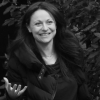
The short answer is yes, 100% yes, absolutely, positively yes. Women might be 50% of the species, but typically, advertising is in no way truly connecting with how older women feel. But the focus here is wrong – it’s not about a better job of representing and reflecting. It’s not even the job of advertising we need to focus on.
The real question is where are the brands whose purpose, design, considerations, bullseye target audience etc are older women? Do we design products and services that understand how women and specifically older women experience the world? No we don’t. You’ve only to read Caroline Criado Perez’s Invisible Women to know that all women have been treated as a secondary consideration in the design of everything from town planning to tax systems, seat belts and drug trials. Putting a few more women in adverts with some natural crows’ feet around the eyes and some grey hairs might make brands feel more inclusive briefly. It might even go some way to helping with the issues of older women having a modicum of increased visibility in our society. But unless the brands are created for these women, in the service of these women, the advertising isn’t important. Having worked with Seven Seas to develop Perfect 7, and working with NHCO on launching a range of amino acid-based supplements, mainly focused on an older female demographic – we can see how little there is out there really speaking to this target.

There is a gap in representation of women around my age (mid-forties) as far as advertising goes. We have the young independent woman, the devoted young mother and the career woman having her cake and eating it, achieving a happy family-life and professional success. My personal experience doesn't fit into any of those. Yes, I have young kids (pro-created later in life), yes I have a pretty good career, and yes I have an amazing but sometimes stressful family life. What gets forgotten though is that for women like me, it's likely we are battling symptoms of menopause or perimenopause, which frankly, can be pretty debilitating and effects every part of our lives.
Apart from the recent focus raised by Davina McCall I don’t see a lot of that awareness translating over to general representation of older women, be that in digital or traditional advertising. The only time I come across those women is if I am being targeted for incontinence products or similar!
It would be lovely to see women who are experiencing the brain fog, the sweats, the mood swings, but not as the things that define them, just a reality of this time of our lives.
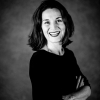
Over 55s already make up 47% of the population and - by 2040 - will account for 63% of the UK’s national spending power. Yet representation of this group in the media is horrifyingly scarce. According to research conducted by Channel 4, just 12% of advertisements feature someone over 50 in a lead role. These people are invisible, and conspicuous in their absence in Adland’s attempts to portray the world realistically.
On the rare occasions women aged over 55 are represented in ads, it’s often a misrepresentation. Given the majority of ads featuring older members of society are for age-related products, such as chairlifts, equity releases and incontinence pads, it’s no surprise that 44% of British women aged 50 and over find advertising to be patronizing, while 15% were depressed or disheartened by the way advertisements treated them
What these ads ignore is that older women are active members of society - they go to work, go out to eat, use technology, watch movies, wear makeup - the reality is a stark contrast with the cliché we see circulated, where older women are often shown as static, forgetful and useless with tech.
Brands need to fix up or risk alienating a substantial portion of their audience.
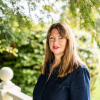
Age.
It’s a delicate subject.
Especially if you’re a female of a certain age.
With it comes a wealth of experience.
But also, the feeling of, dare I say it, being past your best.
Full disclosure: I’m 51.
There, I’ve said it.
And here’s the thing: I’m still loving Monday mornings.
However, I’ve lost count of the number of conversations had over how middle-aged woman should show up in ads.
People mostly conjure up this image of an older woman wearing a sturdy shoe.
My 50+ female friends are sassy and full of beans.
They also don’t own a pair of shoes featured in the back pages of the Sunday supplements.
Luckily, when creatives now write a casting brief, they can’t specify age.
It takes all judgment out of the age equation.
Still, we haven’t cracked how we don’t typecast age. Because the idea in most heads isn’t the reality.
So, putting it out there: 50+ women aren’t waiting to push up daisies.
They still make an impact on the world.
Can have pink, red, blue, or gray hair.
Sometimes, they even wear a heel.
So, here’s to age.
Now, off to cast a vibrant woman that leaves you oblivious to her age.
Or dare I dream it, not even thinking about her age. Just how brilliant she is.

Absolutely, current representations need to be disrupted.
A few years back I worked on a new range of beauty products for women fifty plus. The ad landscape featured few women of this age and when they did, brands often portrayed them as weak, passive, even ill (the dial has shifted slightly since then, though not enough).
But when we dug deeper, we found a very different reality.
Older women are badass. Often liberated from caring duties and societal expectations, they have an admirable, unapologetic attitude. They are wise, beautiful and capable.
After fifty, data shows confidence[1] and happiness growing[2], giving women unstoppable power.
Brands need to use this reality to disrupt outdated stereotypes. Rising above fear-based advertising that stigmatizes and shames, with powerful female narratives, gives brands stronger connections to all women and more commercially effective advertising. Once more, it makes mature women feel seen and gives younger women something to look forward to, rather than fear.
Hollywood is reflecting this unstoppable cultural force. Streep, Dern and Kidman in Big Little Lies, McDormand in Nomadland and Thompson in Good Luck to You, Leo Grande, just to name a few. Fashion too, is a nod to this inspirational group. Kidman (I’m a big fan) walking for Balenciaga at Paris Fashion Week and Valentino showing strong age diversity in their Fall/Winter ’22 show.
Women are fabulous in their fifties, and spectacular in their sixties, seventies and beyond. It’s time for advertising showed this.
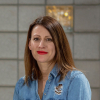
Gendered ageism, the new sexism in advertising. There, I’ve said it. But it’s not fully our fault – after all we live in a culture that for a long time has undervalued age and experience. That said, our industry is obsessed to distraction with youth culture. In an effort to stay ‘aspirational’, we script ads in which mid-life+ women rarely feature or when and if they occasionally do, we consistently recruit younger women to play older women.
The latest research from our female-focused platform The {f} Space reveals that as women in the UK age, they increasingly feel invisible to advertisers, with six out of ten of those over 55 saying there is a distinct lack of representation of older women in advertising. So yes, brands (and their agencies) need to do a lot better.
The business imperative is clear: 70 per cent of the UK's total wealth is held by those over 50 (the majority of which is predicted to be in female hands by 2025). But it goes even further than that: our research also revealed that it's young men and women, aged 18-24, who most want to see women breaking age stereotypes in advertising. By failing to step up to the plate and be the change that the younger generation expects brands to be when it comes to diversity and inclusion, those brands risk losing relevance in the hearts of these progressive men and women.
Read more on this topic here.
Looks like you need to create a Creativebrief account to perform this action.
Create account Sign inLooks like you need to create a Creativebrief account to perform this action.
Create account Sign in